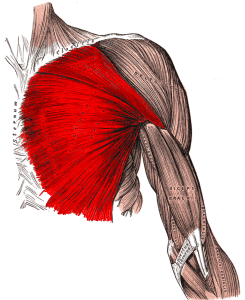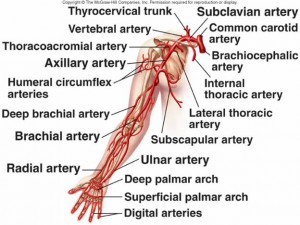Back to Blog
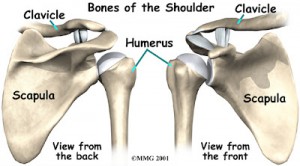
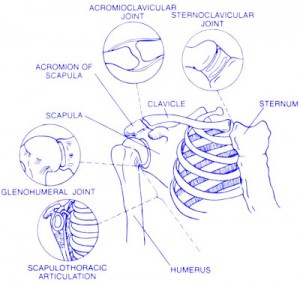
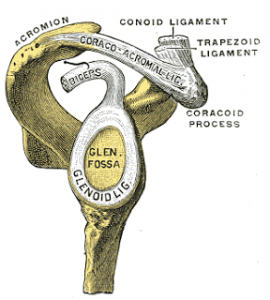
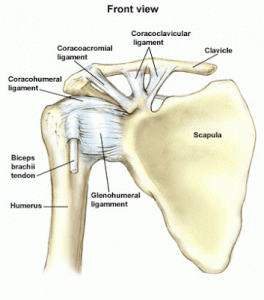
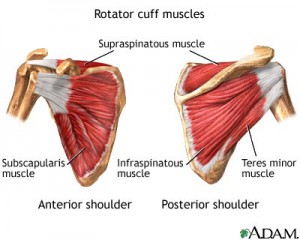
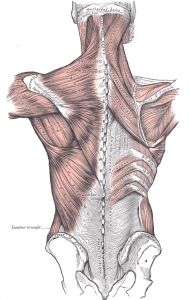
Anatomy of the Shoulder
To be able to fully understand your condition, you have to know the anatomy of the area of injury. I have been very lucky for a couple reasons: I have a father that lectures in the Department of Anatomy at the School of Medicine and I worked as a prosector for the School of Medicine for 3 years (the former helped put a good word in for the latter… thanks dad!). Being able to see under the skin and appreciate the depth and nuances of human anatomy has been extremely helpful in my career as a physiotherapist.
The shoulder is not only one of the more complicated joints of the body, it is also very complicated. We will start at the deepest level (the bones and joints) and make our way more and more superficially until we are at the skin level.
FIRST LAYER
The shoulder complex (depending on how you see it) is made up by three bones: the humerus (arm bone), thescapula (the shoulder blade), and the clavicle (collarbone). These bones will link together in what is called a joint, and in the shoulder there are 4 joints (with one pseudo-joint). The obvious first joint is the glenohumeral joint (GHJt), this is the ball-in-socket joint made by the humerus (ball) and the scapula’s glenoid fossa (socket). The other joints are the acromioclavicular joint (ACJt), the sternoclavicular joint (SCJt), and the scapulothoracic joint (ScTJt – not really a joint). The GHJt, ACJt, and SCJt have a wrapping around the surfaces of the joint – called the joint capsule.


Injuries that may occur at this level of anatomy consist of fractures of the bone (commonly humeral head fractures and clavicular fractures), as well as joint capsule tears (AC joint separation – aka separated shoulder or shoulder dislocations). Usually only traumatic mechanisms of injury result in these pathologies.
One thing I would like to highlight is a structure that lies within the GHJt, the labrum. As I noted above, the GHJt is a ball-in-socket style joint and this design allows you amazing mobility about the shoulder to move in all directions. The problem is that in gaining mobility, we lose stability and this is why the shoulder is such a common area of injury. The socket of the GHJt is actually very shallow, but this is where the labrum helps out. The labrum deepens the socket in order to gain more passive joint stability. This being a soft tissue, this structure is prone to injuries such as tearing.

The above image shows a side view of the shoulder looking directly into the glenoid fossa or socket of the GHJt. The labrum is tagged as the GLENOID LIG. You can also see here that one of the bicep tendons is attached to the labrum. The labrum is damaged often with anterior shoulder dislocations (where the ball pops out in a forward direction) – these pathologies can sometimes be termed Hill-Sach’s lesions or Bankart lesions.
SECOND LAYER
The next layer would be the ligaments of the shoulder. Ligaments cross over joints to help stabilize them from excessive movement and are made up of strong collagen fibers. These too usually are damaged only with strong impact forces or high velocity forces.

These ligaments create what we call Passive Stability, where there is no physical expenditure of energy to maintain this stability. But what happens if you damage some of your passive stability structures? Well that’s what the next layer is for!
THIRD LAYER
This is the level where the rotator-cuff muscles and deeper muscles of the shoulder sit. Lets go over the rotator-cuff muscles first.
Just as it sounds, these muscles make a muscle cuff around the shoulder in order to help with rotary movements at the joint surface. It is comprised of four small muscles: supraspinatus, infraspinatus, teres minor, and subscapularis. You can see by this great image by ADAM, where these muscles sit.
FYI anterior (latin: ante – before) means looking from the front and posterior (latin post – after) means looking from the back.

The rotator-cuff muscles create Active Stability. You may be required by your physiotherapist to train the rotator-cuff muscles in order to gain active stability to make up from the lack passive stability caused by an injury. Sometimes muscle imbalances or postural changes can lead to positional changes of the humerus in the glenoid fossa. This, over time, can manifest in internal or external shoulder impingement syndromes, and may follow with a non-traumatic rotator-cuff partial or full-thickness tear. The most common muscle being injured is the supraspinatus tendon that (with poor posture and muscle imbalances) can be irritated in the sub-acromial space.
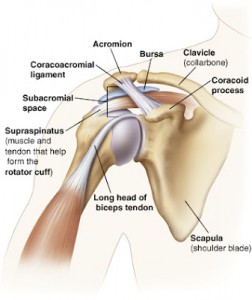
At this same deep level, there is also the long head of the biceps tendon (there are two tendons, this bi. Latin = 2). There is a groove on the humerus that this tendon makes its way through and attaches itself to the aforementioned superior (latin: top) of the labrum. You can see in the image above where this tendon runs. After the supraspinatus, this is the 2nd most common tendon to become irritates and become strained (aka: bicipital tendonosis).
FOURTH LAYER
POSTERIORLY:
In the back, there are a number of larger, superficial muscles that can control the movement of the scapula on the thoracic wall and movement of the humerus on the scapula. Both groups of muscles must work in concert to be able to have full and pain-free range of motion (creating a scapulo-humeral rhythm). To have full arm elevation, we require the arm to lift, but also the shoulder blade to turn upwards (in fact, we even need the upper part of our thoracic spine to extend, but that will be for another post!).
Lets take a look at some of the muscles on the posterior surface of the back that affect the shoulder:

This image shows the three sections of the trapezius muscle (all of which do completely different activities), the latissimus dorsi (the pull-up muscle), teres major, rhomboid major and minor (the rowing muscles), levator scapulae (latin: shoulder blade lifter) and the deltoid. Each of these muscles create different movements to the shoulder, which I will leave out for another posting. An unmentioned muscle here would be the triceps muscle.
ANTERIORLY:
Here lies the pectoral muscles (major and minor), biceps, coracobrachialis, serratus anterior (latin: saw-like) and subclavius
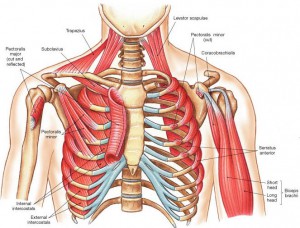
OTHER STRUCTURES:
Although unmentioned, there are other structures than just the bones, joints and muscles in the shoulder.
There are nerves that supply each of the muscles, the joint capsules, the ligaments, and even the bones themselves. Compression, torsion, adhesion, or tension can irritate these nerves and lead to manifestations in the shoulder. Often a component of shoulder complaints stem from issues going on in the neck, possibly irritation on a nerve root. Irritation can appear as numbness or tingling down the arm, weakness, or simply pain.
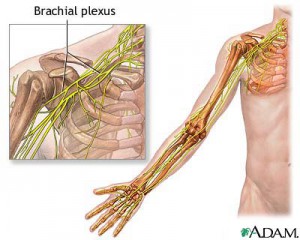
There are a number of bursae (fluid filled sacks) that sit between muscles to stop too much friction from occurring. These structures can be irritated with continual overhead motion that occurs with swimmers, pitchers, and even drywallers or electricians.
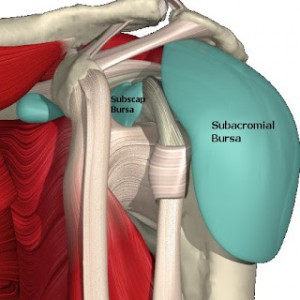
There are also blood vessels (arteries and veins) and lymphatic drainage areas. Compression to an artery can lead to a numbness type of feeling (can be distinguished from nerve numbness). Compression or damage to the veins or lymphatic system can create edema (swelling) to the arm and hand.
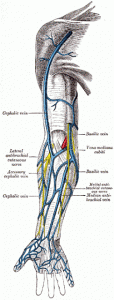
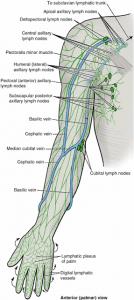
SUMMARY
This is not the complete anatomy of the shoulder, as there are a number of items that we did not go into much depth about, with specific movements of the shoulder being one of those topics. I hope to go into further depth at another time. We will use this posting as a guide to further topics about the shoulder.
If you have been diagnosed with any of the previously mentioned conditions, there is much a physiotherapist can do for you. Your orthopaedic physiotherapist is a specialist in human anatomy and body movement. If you have pain in your shoulder or arm and do not know what is causing your pain or loss of function, contact your physiotherapist for an assessment; you do not require a referral from a physician.
I hope that this opened deeper thought and possible discussion about the shoulder and its injuries.


